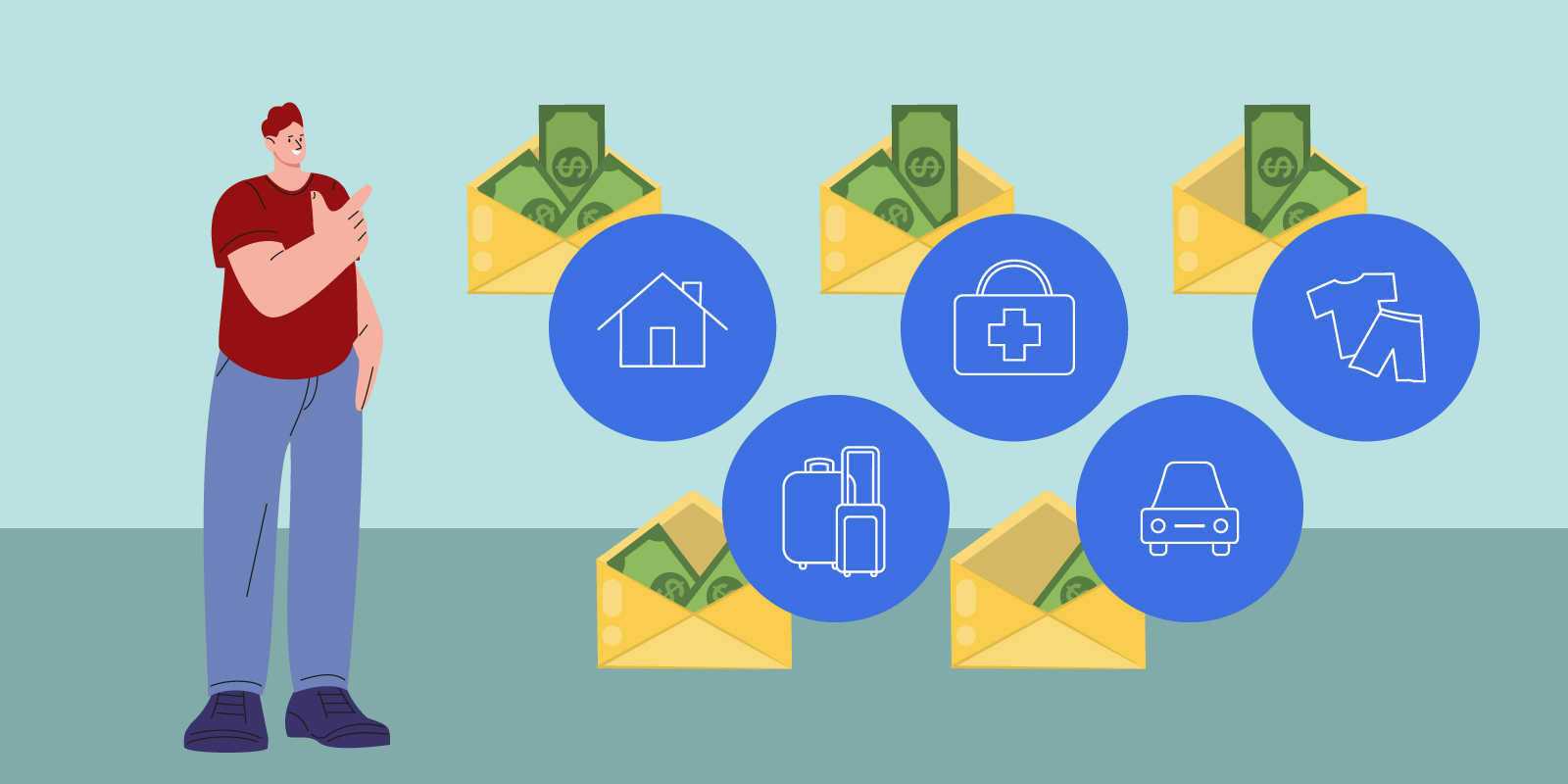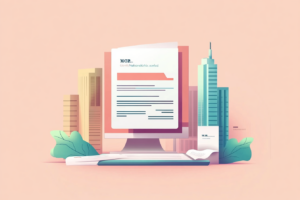As people become more mindful of their spending habits, the cash envelope system has grown in popularity as an effective way to budget and manage finances. But what exactly is the cash envelope system, and how can it help you? Here’s everything you need to know about this clever money-saving technique.
The Basics
The cash envelope system is believed to have originated in China around the 19th century. It was popularized by American author and financial speaker Dave Ramsey, who wrote about it in his book The Total Money Makeover.
Ramsey’s version of the system focuses on budgeting and tracking spending by assigning an envelope with a predetermined amount of money for each expense category. This means that once all of the money in a given envelope has been spent, no more can be added until the budget period is over. This method helps keep track of your expenses while also providing a visual aid to prevent overspending.
Pros:
- This system encourages users to stay within their budget since the physicality of withdrawing and storing cash makes them more aware of how much they’re actually spending compared to what’s available in each envelope.
- Having an “emergency fund” separate from your regular envelopes can provide extra security net if any unexpected expenses pop up throughout the month.
Cons:
- Some critics point out that there can be some drawbacks associated with this budgeting tool – primarily dealing with accountability when it comes time to move money around between envelopes or restock depleted funds.
- Using a cash envelope system for all your purchases may not be realistic for everyone depending on your individual lifestyle and needs, as most transactions today are done electronically.
How to Use a Cash Envelope System

Using a cash envelope system is an effective way to track your spending and stay within budget. Here’s how it works.
Step One – Create a Budget
Creating a budget for your cash envelope system is essential in order to ensure that you are properly allocating funds to each category and staying within your overall budget. Here’s how to get started.
- Track income: Track both your expected and actual income throughout the month. Doing this will give you an accurate idea of what you have available to spend in each category.
- Adjust as needed: Make adjustments throughout the month if necessary, such as increasing or decreasing certain amounts when unexpected expenses arise or when there is a change in income.
- Review regularly: At least once a week, review the envelopes and make sure that the amounts are still realistic, given current circumstances.
Step Two – Get Organized
- Set up envelopes for each category. When setting up a cash envelope system, it’s important to consider what areas you want to track. Here are some common categories that you may want to include:
- Groceries: This includes food, household items and anything else related to eating.
- Entertainment: Money for movies, shows, books, etc.
- Utilities: Think utility bills such as water, electricity and phone.
- Savings: A set amount for unexpected expenses or emergencies.
- Debt repayment: Money allocated towards paying off your debts (credit cards, student loans, etc.).
Step Three – Set up Limits
Creating limits for each of the categories in your cash envelope system will help you stay on track with your budget. Here’s how to set realistic limits.
- Assess current finances: Take an honest look at your current income, expenses and debt obligations. This will give you an idea of what kind of spending limits you can manage.
- Set realistic goals: Set limits for each category that are attainable and make sure that no one category takes up too much of your overall budget.
- Be flexible: While setting budgets is important, it’s also important to be realistic and be prepared to adjust when necessary. If an unexpected expense arises, consider reducing the limit in another category or dipping into savings to cover it.
- Monitor progress: Monitor your progress regularly to make sure that you are still within the spending limits that you have set for each category.
Step Four – Fill Each Envelope with Cash and Track
Whenever you make a purchase, take the cash from the relevant envelope and track it so you know exactly how much you have left in it. This will help ensure that you don’t overspend on any given item.
Step Five – Allocate Extra Funds
Allocate money for emergencies or unexpected expenses. Having money saved in this manner can help alleviate stress if something comes up that isn’t accounted for in your budget.
Who Benefits from a Cash Envelope System?
A cash envelope system can be beneficial to anyone looking to gain more control over their finances. This system works especially well for those who are prone to impulse spending or find it difficult to stick to a budget. It’s a great way to make sure that money is not being wasted and that it is being put toward the most important things first.
The cash envelope system can also help people get out of debt faster by giving them an easier way to track their expenses and allocate funds for debt repayment. Lastly, it can benefit people who want to start saving more since having cash visible in envelopes makes it harder for them to spend impulsively.
How a Cash Envelope System Can Change Your Finances
Using a cash envelope system can have many positive effects on your finances. Here are just a few:
- Increased financial awareness: When you use cash only, it’s easier to keep track of your spending and stay within your budget. This can help you be more mindful of where your money is going and find areas in which you could cut back.
- Reduced impulse buying: By knowing exactly how much money is in each envelope, you will be able to recognize when you are overspending. Not having access to credit or debit cards may also help reduce the temptation to buy things impulsively.
- Encourages saving: When using this system, it’s important to set aside extra funds for emergencies. As you begin to get accustomed to saving money each month, it can become second nature and help improve your long-term financial goals.
FAQs about the Cash Envelope System
Here are a few commonly asked questions about the cash envelope system.
Is it the same as cash stuffing?
No, the cash envelope system and cash stuffing are not the same. The cash envelope system involves separating your monthly budget into individual “envelopes” according to the category, while cash stuffing involves hiding money away in various places around the house. Both have been used as methods of budgeting, but they serve different purposes.
Do you need to use cash?
While some people still prefer using actual cash, many are now opting for using a debit or credit card instead. In this case, transactions would be tracked and allocated accordingly in each specific envelope.
How much should I put in each envelope?
This will depend on individual needs and lifestyle, but generally speaking, it is recommended that you set aside funds for essential living expenses like rent and groceries first, then allocate any leftover funds toward entertainment or other non-essential activities.
What about an emergency?
When unforeseen expenses arise, the cash envelope system can help prepare you for them. Here are some tips.
- Build an emergency fund: Set aside additional funds in a separate envelope in case of emergencies. Consider starting with a small amount and increasing your contributions over time as your financial situation improves.
- Prioritize expenses: If an expense is both necessary and unavoidable, it should be prioritized. This could mean temporarily sacrificing other areas of your budget until you have enough money saved up to cover the unexpected cost.
- Look for creative solutions: Sometimes, there can be creative solutions to emergencies that don’t involve spending extra money. For example, borrowing from family or friends, using points from loyalty programs, or bartering services with someone else may all be viable options.
How do you track online or digital payments with a cash envelope system?
Tracking online or digital payments with a cash envelope system can be difficult, but there are still ways to do it.
- Create separate accounts: Keeping your physical cash in envelopes and tracking digital payments separately is the simplest way to keep track of what you’ve spent. This can be done by creating separate bank accounts for each category of spending.
- Keep receipt records: Make sure to save all receipts from online purchases as proof of what you have spent in each category. Having them on hand will help you track where your money is going.
- Set up automatic transfers: Set up automatic transfers from your main checking account into separate accounts so that you don’t have to manually transfer funds every time you make an online purchase.
- Utilize budgeting apps: Use apps such as Mint and Goodbudget to track transactions across all of your accounts and give you an accurate picture of what you’re spending in each category.
Is a cash envelope system good for kids?
A cash envelope system can be a great way to teach kids how to budget and manage their money. It helps them to learn the concept of saving up for something they want and prioritizing needs over wants. It also helps them become more aware of their spending habits, as they can easily see how much money is being saved or spent in each area.
Cash envelopes can also help children start planning out short-term goals on their own and encourages them to think about the long-term impact of spending decisions. With a cash envelope system in place, kids may even develop a greater appreciation for the value of money at an early age.
Money Left?
If you have money left over at the end of the month, there are several things you can do.
- Maximize your savings: Increase your contributions to an existing savings account or start a new one. You may want to consider investing some of these funds in order to earn more interest.
- Pay off debts: Consider putting extra money towards credit cards or unpaid bills to help reduce any outstanding debt.
- Give back: Making charitable donations can also be an effective way to use leftover cash. This could be done directly through a donation or by buying something from a charitable organization like Heifer International or Kiva.
Is A Cash Envelope System Right For You?
All in all, choosing whether or not to utilize a cash envelope system comes down to personal preference and dedication toward understanding where your money flows on a monthly basis. With proper planning and discipline, however, implementing this strategy into one’s financial plan could potentially help save hundreds (if not thousands) of dollars over time!







